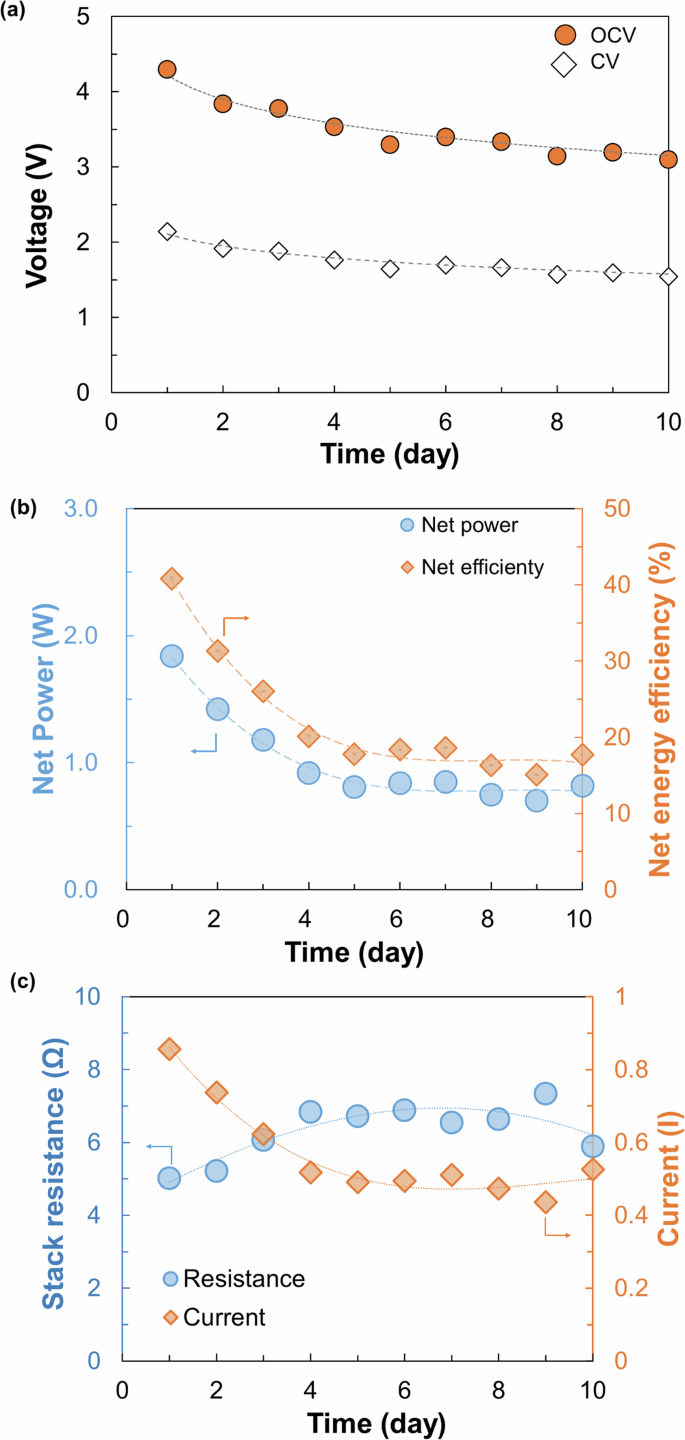实际反向电渗析应用中阴离子交换膜内的水截留
IF 10.4
1区 工程技术
Q1 ENGINEERING, CHEMICAL
引用次数: 0
摘要
反向电渗析(RED)是一种重要的可再生能源技术,使用高盐度进料溶液可提高其功率输出。在此,使用反渗透盐水(约 0.9 M NaClequivalent)和地下水(约 0.01 M NaClequivalent)对超薄离子交换膜的 RED 膜堆进行了为期 10 天的连续运行。最初,净功率和净能效分别为 1.8 W m-2cell pair 和 40.8%,然后逐渐下降,产生的电流和堆栈电阻也是如此。造成这种恶化的原因不是传统的膜污垢,而是阴离子交换膜聚合物基质内的滞留水,尤其是阴极附近的滞留水。高盐度梯度和超薄膜造成了共离子传输和渗透水渗透之间的流量失衡。此外,RED 叠层内部的大量传质也得到了加强,以保持电中性。因此,要实现 RED 的稳定运行,可能需要将高透水性和高渗透选择性的膜结合起来。本文章由计算机程序翻译,如有差异,请以英文原文为准。


Water trapping inside anion exchange membranes during practical reverse electrodialysis applications
The power output of reverse electrodialysis (RED), an important renewable energy technology, can be improved using high-salinity feed solutions. Herein, a RED stack of ultrathin ion exchange membranes was operated continuously for 10 days using reverse osmosis brine (~0.9 M NaClequivalent) and underground water (~0.01 M NaClequivalent). The net power and net energy efficiency were initially 1.8 W m−2cell pair and 40.8%, respectively, and then decreased gradually, as did the generated current and stack resistance. This deterioration was caused not by conventional membrane fouling but by trapped water inside the polymer matrix of the anion exchange membrane, especially near the cathode. The high salinity gradient and ultrathin membranes caused a flux imbalance between co-ion transport and osmotic water permeation. Further, bulk mass transfer was enhanced inside the RED stack to maintain electroneutrality. Therefore, combinations of membranes with high water permeability and permselectivity may be required to achieve stable RED operation.
求助全文
通过发布文献求助,成功后即可免费获取论文全文。
去求助
来源期刊

npj Clean Water
Environmental Science-Water Science and Technology
CiteScore
15.30
自引率
2.60%
发文量
61
审稿时长
5 weeks
期刊介绍:
npj Clean Water publishes high-quality papers that report cutting-edge science, technology, applications, policies, and societal issues contributing to a more sustainable supply of clean water. The journal's publications may also support and accelerate the achievement of Sustainable Development Goal 6, which focuses on clean water and sanitation.
 求助内容:
求助内容: 应助结果提醒方式:
应助结果提醒方式:


